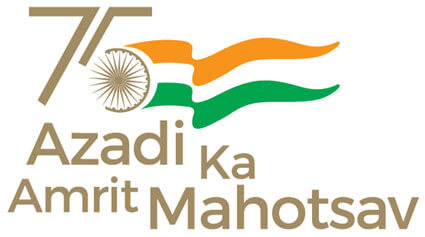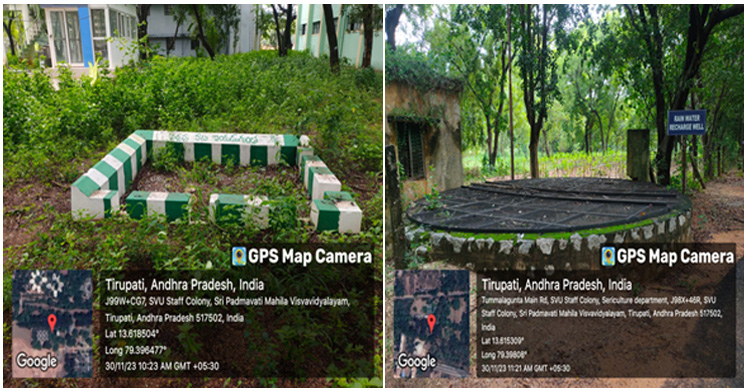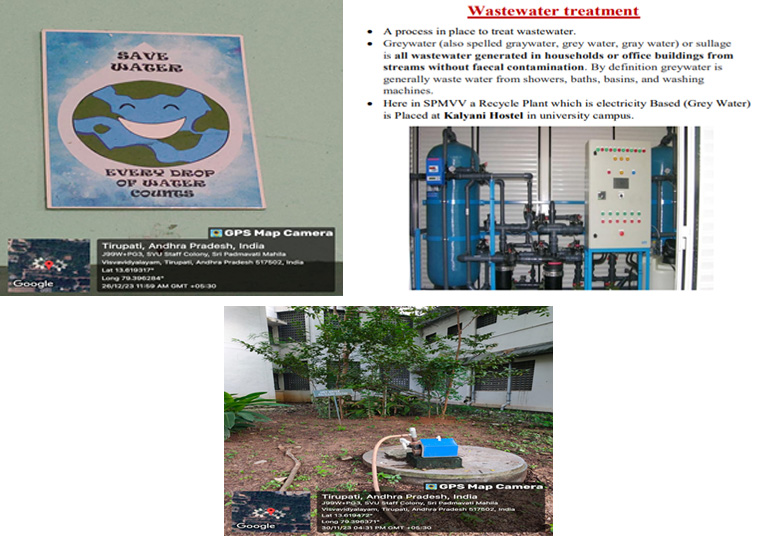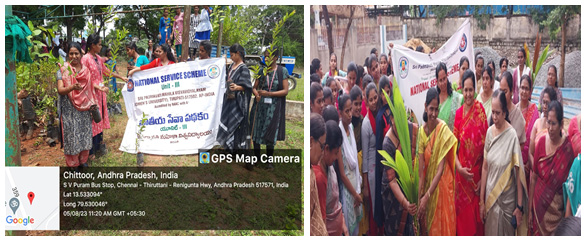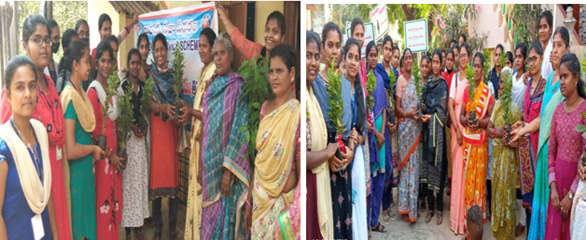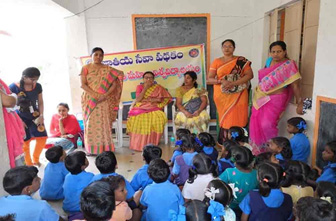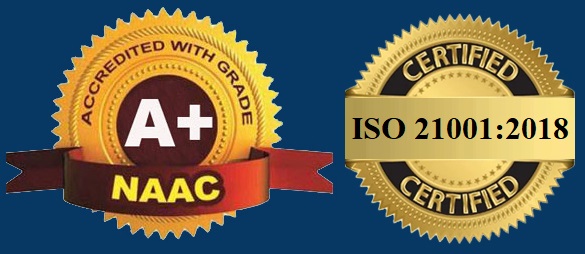BEST PRACTICE 1 : SPMVV Campus Synergy on Innovation Incubation & Entrepreneurship (SCSIIE)
Title of the practice: Campus Synergy on Innovation Incubation & Entrepreneurship (SCSIIE)
Objectives of the practice :
- To integrate all the Centers in the University and promote synergy to promote “Innovation and Entrepreneurship”
- To facilitate development of an “Entrepreneurial ecosystem” in SPMVV
- To promote activities related to Intellectual Property Management and technology licensing enabling creation of a robust innovation and start-up ecosystem.
- To improve visibility of these Centers across the country
- To promote networked learning in order to generate more innovative ideas.
- To contribute to economic and social development, by taking up new missions while preserving our own sustainability.
SPMVV has several Centers which are functioning with their own individual objectives and goals. Several of these goals were overlapping and the Centers were conducting their work individually to achieve them. Resources of various Centers were being allotted based on grants received by them or by the University based on their requirement. In order to scale up achievements of these Centers and also for optimal utilization of resources, the Institution integrated these Centers under one umbrella.
3. The Practice: Centers integrated under SCSIIESSIIE-TBI (SPMVV Society for Innovation Incubation and Entrepreneurship- Technology Business Incubator): SPMVV and National Science and Technology Entrepreneurship Development Board (NSTEDB) of the Department of Science and Technology (DST), Government of India collaborated to establish TBI in SPMVV under the aegis of SSIIE. The major objective of TBI is not only to facilitate in the setting up of start-ups which are technology-based and knowledge-driven but also to nurture their growth by providing them with the necessary platform required for their growth and establishment as successful enterprises.
SSIIE-WBIF (SPMVV Society for Innovation Incubation and Entrepreneurship-Women Biotech Incubation Facility): A Bio Incubator has been sanctioned by DBT through BIRAC (Biotechnology Industry Research Assistance Council) under BioNEST scheme. This entrepreneurial fringe is for any entrepreneur with the motivation and determination in research to build a real business in biotech area of life sciences. SPMVV-WBIF provides an excellent infrastructure facility along with experienced mentors to guide in all areas of life sciences.
SPMVV Women ICT Frontier Initiative (WiFi-Saviskara): The country’s first ever Women ICT Frontier Initiative (WIFI) program and Training of Trainers (TOT) centre established in cooperation with the United Nations Asian and Pacific Training Centre for ICT for Development (APCICT). It is a flagship program of UN-APCICT to promote women entrepreneurship through ICT. The WIFI in India is named as WIFI Saviskara–Transcending of Talent. WIFI is linked to the economic participation and entrepreneurship as vital means of achieving the 2030 agenda for sustainable development.
Technopreneur promotion program Outreach cum Cluster innovation Centre (TOCIC): TOCIC-SPMVV is a major nodal Centre of DSIR, offers necessary assistance to innovators with potential ideas in developing and commercializing their idea or product. It offers necessary assistance to innovators with potential ideas in developing and commercializing their idea or product.
CURIE-AI: Consolidation of University Research for Innovation and Excellence in Women Universities (CURIE) program with support of Department of Science and Technology (DST) is to develop Artificial Intelligence (AI) related infrastructure for research. CURIE-AI provides short term training programs, part time courses, electives to students studying in diverse fields like Agriculture, Science, Medicine, Law, Humanities and Engineering.
Institutional Innovation Council (IIC): SPMVV-IIC is a recognised entity as per MHRD, IIC and registered under the name of School of Engineering & Technology (SOET) with IIC No: 201811697. IIC 3.0 is and National Innovation and Start-up Policy (NISP) is implemented in University.
Rural Women Technology Park (RWTP): The women technology park has been established under a scheme of Department of Science & Technology with a view to empowering women through inputs of science and technology. This Rural Women Technology Park is endorsed by Herbal Food and cosmetics Products. The aim of Women Technology Park is to create awareness among rural community and give trainings of proven technology to reap maximum benefits from their existing resources. Its objective is to make them aware about “processing and preparation” that can enhance their income multiple times.
The Placement & Career Counseling Cell, SPMVV: The Placement & Career Counseling Cell has been functioning effectively in providing various job-oriented training and imparting company specific skills for the students of SPMVV through career counseling cell and providing placements through placement cell.
Skill Development Centre (SDC): SDC with the support of APSSDC has established three employability skill centres in the University to improve skills among students. Under this, Laptops -90, Tabs-90, LED monitors - 6, Solar UPS, Printers, CC cameras, wireless routers, dongles etc. were issued by state government through APSSDC to university. APSSDC objective is to implement a structured and programmatic solution to skill and to increase employability and promote entrepreneurship in sync with industrial growth.
4. Evidence of Success: Several startups have come up in the University promoted by SCSIIE. SPMVV also received recognitions and entered into various collaborations. It has also helped the University in achieving ranking in NIRF, QSI and other ranking organizations. The SCSIIE has also helped SPMVV successfully train rural women in entrepreneurship by helping them to produce and market herbal products. Several student hackathons have also been successfully conducted.
5. Challenges faced: The challenge before SCSIIE is to provide seed money for young researchers. Yet another challenge is to promote student entrepreneurships and academic entrepreneurs on the campus.
BEST PRACTICES 2: SPMVV Wellness Centre
1. Objectives of the practice:SPMVV Wellness Centre is a healthcare facility that aims to facilitate physical intervention with repeatable positive outcomes for improvement or maintenance of physical form, enhancement of function and good health for achieving a state of wellness of an individual.
The Centre aims to provide/conduct:- Wellness activities for Students and staff of SPMVV
- Activities that help in development of physical, social, mental and spiritual wellness.
- Physical activities like Yoga and meditation practices including self-defense techniques
- Awareness on lifestyle management
- Awareness programs, camps and short-term courses on wellness for students
- Extends these programs to women in the community
The well-being of the staff and students of SPMVV is essential for them to be able to function to their best potential in order to meet the various goals of the institution. In this regard it is the responsibility of the University to provide facilities and opportunities, programs and the necessary environment for the students and staff to maintain good physical, mental and psychological health. It is with this intention that the Centre was started in SPMVV.
3. The Practice:The Centre has conducted various programs in Yoga, meditation and Pranayama
It has adopted Covid mitigation strategies such as providing:
- Counseling for mental well-being in times of the Pandemic
- Awareness on COVID 19 by starting a helpline: 040-4821-4822
- Awareness on COVID 19 through an interactive web resource: https://www.spmvv.ac.in/covid19/Covid19%20Counselling.pdf
- Nutritional tips for boosting immunity to fight the virus: https//www.spmvv.ac.in/covid19/stucovidactiv.html
- An online Wellness Centre: https://youtu.be/g52YCKuSLbk
The Centre conducted a National Webinar On Holistic Wellness In Combating The Covid-19 pandemic
Provided an online platform for aerobics and yoga classes during the pandemicDistribution of Covid 19 relief material to community. 5 kg Rice, Dal, oil, salt, Wheat flour,10 kg vegetables & fruits, soaps, sanitizers and masks were distributed to 30 migrant workers families from Rayadurgam, Karnataka living in tents at Sivaram nagar postal colony, Tirupati.
Conducted two rounds of Covishield vaccination drives for staff and students of SPMVV and their dependents.Was instrumental in purchasing two oxygenators for Health Centre by collecting donations from staff during COVID 2nd wave when the city was facing severe oxygen shortage. It has saved the lives of several non-teaching staff who were affected by COVID during the second wave.
Conducted awareness programs for community on Covid 19 mitigation strategies
Fit India Freedom Run Campaign.
A 3-day awareness program was conducted for ST Women & Anganwadi workers as part of NASI Project on the occasion of Nutrition Month (September,2020) at Muddukrishna puram, Puttur mandal, Chittoor District.
The Centre created and posted posters on nutrition during the national nutrition month in September on social media.
The Centre has made it mandatory for all Non-teaching staff to walk for half-an hour from 4.30pm to 5.00pm every day in the campus. This has helped improve their physical and mental health.
4. Evidence of Success:The foremost evidence of success is that during the Pandemic, the institution was able to provide facilities such as vaccination, awareness on COVID-19 protocols, medical aid to the few staff that were afflicted and an online psychological counseling support which was essential for the staff and students to deal with an unexpected pandemic. The Centre through its various programs has created awareness on physical health among students which has seen more students going for walks, jogs and runs, participate in games and sports after the Wellness Centre has been established. It has also promoted the use of cycling among students which has resulted in decreased pollution on campus and better student health. The activities of the Wellness Centre ensured that even during the pandemic, the staff were able to obtain information and support on maintaining physical and mental health during lockdown and were able to successfully conduct online classes for student, conduct and participate in various webinars and also help the community.
5. Challenges faced:The Centre staff and students faced hardships during the COVID-19 pandemic relief works. Motivating people to vaccinate themselves and wearing masks was a challenging task. The students and staff adopted various means including street plays and dramas to motivate villagers to follow COVID-19 protocols. It was also risky for the staff and students to go about the relief works during the pandemic, considering increased risk of exposure. However, the staff and students by strictly following the protocols and convincing their family members, successfully conducted the relief works. However, people in several of the villagers were hostile to the idea of vaccination that was proposed by the staff of the Centre.

